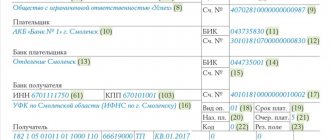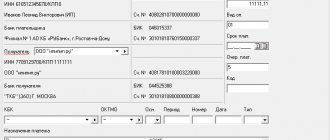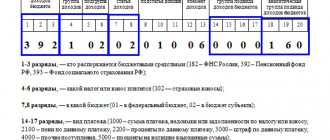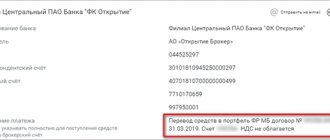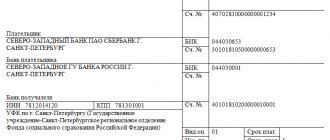Starting with reporting for 2021, tax authorities began to monitor the calculation and payment of insurance premiums. In the article, employers will receive answers to the questions: what payments and where to pay.
Payments accrued for payments and other remuneration in favor of individuals are transferred in the following order:
| № | Payments | Recipient | KBK |
| 1 | For compulsory pension insurance | Inspectorate of the Federal Tax Service | 182 1 0210 160 |
| 2 | For compulsory social insurance in case of temporary disability and in connection with maternity | Inspectorate of the Federal Tax Service | 182 1 0210 160 |
| 3 | For compulsory health insurance | Inspectorate of the Federal Tax Service | 182 1 0213 160 |
| 4 | For compulsory social insurance against accidents at work and occupational diseases (hereinafter referred to as NS and PP) | FSS RF | 393 1 0200 160 |
Important! For each payment listed in the table, a separate payment order is drawn up (clause 6 of Article 431 of the Tax Code of the Russian Federation).
What do insurance premiums go to?
Article 8 of the Tax Code of the Russian Federation forms the concept of insurance premiums as mandatory contributions to the funds:
- Pension for the insurance part of the pension and compulsory health insurance;
- to the Social Insurance Fund for the formation of payments for insurance cases (accidents, occupational diseases and injuries at work) and benefits (maternity, child care, sick leave, funerals). Funds are collected from individuals and legal entities to exercise the rights of insured citizens to state-guaranteed financial support for the specified type of social insurance.
Article 1 of Federal Law No. 165-FZ of July 16, 1999 defines a list of problems for which state social support is provided to working citizens, which includes: accidents and injuries at work, disability, loss of a breadwinner, occupational disease, pregnancy and childbirth, childbirth or children, child care once the child reaches the age of 1.5 years. The legislation also establishes other insurance events that are subject to compensation by social insurance.
In world practice, the history of the emergence of insurance premiums is new. It was based on factors (labor relations, economic development) under which hired workers needed social support and protection of rights. Bismarck's code of imperial laws, published in the 19th century, is one of the sources that contains the first mentions of social insurance measures.
The formation of the insurance system in Russia began after the abolition of serfdom. The creation of a law on the “mandatory establishment of auxiliary partnerships at state-owned mining plants” dates back to this time.
The pension fund, designed to regulate the provision of unemployed citizens and the functioning of the mechanisms of the market economy, was adopted on December 22, 1990. Before its appearance, contributions to the treasury were made at the expense of the wage fund of enterprises.
Top 3 articles that will be useful to every manager:
- How to choose a tax system to save on payments
- How to minimize taxes and not interest the tax authorities
- How to create an electronic signature quickly and easily
A little later, on January 1, 1991, the FSS (Social Insurance Fund) was formed, which ensures the regulation of social insurance relations for the population.
The Health Insurance Fund, which finances services in medical institutions, was created on February 24, 1993.
Insurance premiums are regulated by:
- Chapter 34 of the Tax Code of the Russian Federation;
- Federal Law No. 125-FZ of July 24, 1998 “On compulsory social insurance against industrial accidents and occupational diseases”;
- Federal Law No. 255-FZ dated December 29, 2006 “On compulsory social insurance in case of temporary disability and in connection with maternity”;
- Federal Law No. 165-FZ of July 16, 1999 “On the fundamentals of compulsory social insurance”;
- Federal Law No. 326-FZ dated November 29, 2010 “On compulsory health insurance in the Russian Federation”;
- Federal Law No. 167-FZ dated December 15, 2001 “On compulsory pension insurance in the Russian Federation.”
Innovations in the duties of the Federal Tax Service from 2021
Dear readers! The article talks about typical ways to resolve legal issues, but each case is individual. If you want to find out how to solve your particular problem , contact a consultant:
8 (800) 700 95 53
APPLICATIONS AND CALLS ARE ACCEPTED 24/7 and 7 days a week.
It's fast and FREE !
Peculiarities:
- Acceptance of payments;
- Control of calculations and their full payment by institutions;
- Providing installment plans or deferred payment;
- Finding deficiencies in payments, including arrears of fines and penalties, even if their occurrence is recorded earlier than 01/01/2017.
Who is required to pay insurance premiums
The policyholder who transfers wages and other payments in favor of the insured persons is obliged to pay insurance premiums (Clause 1 of Article 419 of the Tax Code of the Russian Federation).
The employer must use the organization's funds to make payments to the funds, and not deduct them from the wages of employees.
The policyholders are:
- individual entrepreneurs;
- organizations;
- individuals who are not registered as individual entrepreneurs.
If an individual entrepreneur has registered employees, contributions are paid at the rates accepted for all policyholders.
A special feature of payments to funds (clause 2 of Article 419 of the Tax Code of the Russian Federation) for an individual entrepreneur is the obligation to make contributions for himself.
Types of insurance premiums
Article 8 of the Tax Code of the Russian Federation establishes the following types of contributions:
- for compulsory health insurance (CHI);
- for compulsory pension insurance (OPI);
- for insurance of accidents and occupational diseases (AS and PP);
- for compulsory social insurance in case of temporary disability and maternity (VNiM).
Contributions are calculated from the wage fund and other payments in favor of employees, to which Article 420 of the Tax Code of the Russian Federation includes:
- amounts of vacation payments;
- compensation upon dismissal;
- bonus payments;
- financial assistance per employee exceeding 4 thousand rubles per year.
The following amounts are not subject to insurance premiums:
- financial assistance in the amount of 4 thousand rubles per year per employee;
- a lump sum payment in the event of an emergency, natural disaster, birth of a child, or death of a family member. It will be necessary to issue an order for the provision of financial assistance; documents confirming the event will be attached so that contributions will not be charged during the inspection;
- benefits assigned by the state: for pregnancy and childbirth, registration with an antenatal clinic in the early stages, temporary disability, unemployment;
- severance pay not exceeding three times the average monthly salary;
- under labor or civil law contracts for citizens who are not recognized as insured on the territory of the Russian Federation by law: foreigners, stateless, temporarily staying;
- for the performance of work and provision of services under a civil law contract. Payments are not taxed with contributions to OSS and injuries. But insurance premiums for compulsory medical insurance and compulsory medical insurance will have to be calculated and paid.
How to calculate insurance premiums
Each type of insurance premium has its own base and rate. The base includes the amounts of accrued remuneration and payments for the billing period (year) on an accrual basis for each individual (Article 421 of the Tax Code of the Russian Federation).
The table shows the rates and maximum base in 2021 for all types of premiums.
| Base for calculating insurance premiums | To the pension fund (PFR) | To the Social Insurance Fund (SIF) | To the compulsory health insurance fund (CHI) | |
| Maximum basis for calculation | 1 150 000 | 865 000 | no limit | |
| Amount of remuneration = Base/12 months. | 95 833 | 72 083 | no limit | |
| Contribution rate | 22,00 % | 2,90 % | 1,80 % | 5,1 % |
| Contribution amount = Base * Rate | 25 085 | 15 570 | ||
| Rate subject to exceeding the base | 10,00 % | 0,00 % | 0,00 % | 5,1 % |
The example below shows how to calculate insurance premiums.
The organization LLC "Kreker" carries out activities - the production of bakery products, keeps records according to the OSNO (general taxation system), and transfers salaries to employees. We will calculate the company's deductions for insurance premiums in December.
In option 1, it is assumed that the base for accruals is within the established limits and one of the salaries was 25,000 rubles.
OPS = 25,000 rub. * 22% = 5500 rub.
Compulsory medical insurance = 25,000 rubles. * 5.1% = 1275 rub.
VNiM = 25,000 rub. * 2.9% = 725 rub.
Injuries = 25,000 rubles. * 0.2% = 50 rub.
The coefficient for calculating contributions from NS and PP (injuries) for each organization is set separately and depends on the type of work or services performed (the more dangerous the activity, the higher it is), the value of 0.2% is taken as an example.
When an organization registers with the Social Insurance Fund, it receives a statistical statement indicating the percentage of contributions to the fund, or a notification about the rate of insurance premiums for compulsory insurance is sent by mail. Every year, the Social Insurance Fund requires you to declare the main type of activity of the organization in order to change the contribution rate. If an enterprise carries out several areas of work or services at once, a tariff is set for the most dangerous type of work.
In the 2nd option, it is assumed that the size of the base will exceed the established limit for the pension fund and VNIM insurance. The established salary amount is 250,000 rubles. The rate on pension contributions will be 10%, the calculation of contributions for temporary disability and maternity is not carried out, and accordingly, nothing is paid.
OPS = 250,000 rub. * 10% = 25,000 rub.
Compulsory medical insurance = 250,000 rub. * 5.1% = 12,750 rub.
Injuries = 250,000 rub.* 0.2% = 500 rub.
Who is the payer
The direct payer of insurance premiums is the policyholder. These include organizations and entrepreneurs who pay their employees remuneration, from which it is necessary to pay insurance premiums. In addition, policyholders include entrepreneurs who have no subordinates (individual entrepreneurs without staff, private lawyers, etc.). In this case, the payment of contributions occurs directly for yourself.
The employer is responsible for paying insurance premiums for its employees. This was the case before and remains the same in 2021. If the organization’s activities do not require the presence of employees or they do not have social insurance, then the employer makes contributions only for himself.
From January 1, 2021, the tax service became the controlled body for insurance premiums. It monitors both previously registered policyholders who submitted information to the Pension Fund or Social Insurance Fund, as well as new ones who registered as policyholders only this year. The tax service independently transmits the information received from employers to the relevant authorities, and also monitors and records this data, checking it with the actual number of employees in the policyholder’s company.
For several categories of policyholders, changes have been made to registration with the Federal Tax Service or upon deletion from there:
| international company | The policyholder must register with the Federal Tax Service upon application. |
| Individual | Upon application to the tax service at the place of registration or permanent residence. |
| Appraisers | They are registered at the request of the body that directly controls their activities. |
Thus, when registering a new organization, opening an individual entrepreneur, or simply hiring employees, it is necessary to compare the proposed activities and clarify the procedure for registering as an insurer. Existing companies automatically receive policyholder status, regardless of changes introduced in 2021, i.e. There is no need to re-register with the tax service.
Where to pay insurance premiums
Contributions from NS and PP are transferred to the FSS (Social Insurance Fund). Deductions for compulsory insurance (medical and pension) are administered by the tax authority (IFTS), to which the organization belongs on a territorial basis.
The presence of an organization with a separate branch located in another region requires payment of contributions at the location of the main unit. If a subsidiary has the authority to pay contributions, it pays them at its location. Insurance deductions are determined by the size of the calculation base of a particular branch.
Payments for each type of contribution are not transferred in one payment order, only in separate ones. Firstly, because contributions go to different authorities, and secondly, according to their own BCC (each contribution corresponds to a specific BCC).
How are insurance premium payments verified?
Correct calculation and compliance with the transfer deadline for payment of insurance premiums is carried out by government bodies during inspections (office or on-site). The transfer of control over these funds from the Pension Fund to the tax inspectorates occurred in 2021. The exception is contributions for injuries; they are administered by the Social Insurance Fund.
Also, the Social Insurance Fund retains powers for the following activities:
- conducting a desk audit for compensation of social insurance funds at the request of the policyholder;
- joint conduct of an on-site audit with the tax office;
- consideration of incoming complaints based on inspection reports.
Tax authorities that monitor the timely and correct transfer of insurance premiums use tools such as:
- joint on-site inspection with the Social Insurance Fund;
- desk audit of calculations of insurance premiums - information is provided using quarterly reporting;
- reconciliation of the amounts of insurance premiums - accrued and paid.
Documents for monitoring insurance premiums that inspection authorities may require are given below.
The company Avtoshina LLC conducts a wholesale trade in tires, the taxation system is general, and received a decision to conduct an on-site inspection. Its purpose is to establish the correctness and timeliness of the transfer of mandatory contributions and determine whether the insurance payments made by the policyholder for 2014–2017 are legal.
The inspection was accompanied by the provision of documents:
- contracts (labor, civil law);
- employment orders;
- work records;
- personal cards of employees;
- time sheets;
- payroll, settlement and pay slips for salary transfers;
- certificates of incapacity for work;
- orders and applications for maternity leave, calculation of the amount of benefits;
- documents confirming payment of monthly maternity benefits (copy of birth certificate, application for leave, order, calculation of the amount of benefits, certificate from the father’s place of work stating that he does not receive benefits);
- orders for financial assistance and documents confirming the basis for its payment.
Also, the tax office and the Social Insurance Fund may request other documents related to the audit being carried out. On the day the inspectors completed their work, a certificate of the inspection was signed.
What changed in 2018-2019:
- The deadline for paying the 1% contribution has been changed.
- in 2021, the minimum wage does not regulate the fixed share of insurance premiums.
In 2021, the amount of payments has increased. Since January 2021, the tax office is responsible for the administration of contributions and control; calculations and amounts of insurance contributions are sent to it. In this regard, it is important to note changes in budget classification codes (BCC) when transferring the fixed part to OPS and OMS.
An important point is to indicate the correct BCC
A particularly important point is that the correct BCCs have been entered for payment of insurance premiums, since errors in this column will lead to the wrong direction or return of funds.
The main BCCs for insurance premiums for employees are presented in the following table:
| Payment | KBK | ||
| OPS | Compulsory medical insurance | FSS | |
| Contribution | 18210202010061010160 | 18210202101081013160 | 18210202090071010160 |
| Penya | 18210202010062110160 | 18210202101082013160 | 18210202090072110160 |
| Fine | 18210202010063010160 | 18210202101083013160 | 18210202090073010160 |
For more detailed information on various BCCs for insurance premiums, read this material.
The amount of insurance premiums for individual entrepreneurs in 2018-2019
Fixed deduction amount, calculated from the minimum wage.
The obligation to pay contributions for pensions and health insurance does not depend on the type of taxation and the number of employees of the individual entrepreneur. The deductions are:
| In the Pension Fund of the Russian Federation rubles | In the Federal Compulsory Medical Insurance Fund rubles | Total, rubles | |
| For 2021 | 29 354,00 | 6 884, 00 | 36 238, 00 |
| For 2021 | 26 545, 00 | 5 840, 00 | 32 385, 00 |
Attention! Contributions for a period not fully worked are calculated in proportion to the time worked.
- 1% on excess income.
The calculation itself has not changed - payment of 1% occurs when income for the period exceeds 300,000 rubles. The deductions are equal to:
(Income – 300,000 rub.) * 1%.
Attention! It is necessary to take into account that payments at a fixed tariff are summed up when combining taxation regimes, after which insurance premiums are calculated.
Features taken into account at the 1% deduction rate:
- Payers of UTII take for calculations the amount of imputed income, and not the actual profit received.
- On the simplified tax system for “income minus expenses”, the base on which 1% is charged is only income (excluding expenses).
- On the simplified tax system with a rate of 6%, contributions are calculated based on the amount of actual revenue.
- Under the general taxation system, the base is considered to be the difference between income and expenses.
- Patent activity involves using the maximum profit in calculations, which is used to determine patent payments.
Example of calculation when the base limit is exceeded
In order to list correctly, it is necessary to understand the operation of the formula used to calculate the required amounts.
Example:
Senior lawyer V.V. Belov During the entire current year, the Felix organization was paid a total of 913,000 rubles (including allowances and bonuses).
Method for calculating funds payable for Belov's insurance:
- Payments to the Pension Fund according to the established limit - 876,000x22% = 192,720 rubles;
- Payments to the Pension Fund exceeding the limits - (913000-876000)x10%=3700 rubles;
- Payments to the FFOMS (no limits are set, so the amount is assessed at one general rate) 913,000x5.1% = 46,563 rubles;
- Payments to the Social Insurance Fund, taking into account limits - 755,000 x 2.9% = 21,895 rubles (if the established limits are exceeded, transfer of funds is not required).
As a result, from the entire amount that Belov V.V. received. towards payment, 264,878 rubles are allocated, which is 29% of the payment to this employee in 2021.
Due dates for payment of contributions in 2021
Until when can insurance premiums be paid? The Tax Code of the Russian Federation establishes the following deadlines:
- For a rate of 1% - payment before July 1 of the following reporting year.
- Contributions calculated from the minimum wage are transferred to the budget until December 31 of the current year.
Attention! When do you need to pay insurance premiums? Previously, the deadline for paying the 1% rate was considered April 1; in 2021, the deadline was moved to July 1.
Many entrepreneurs are concerned about paying contributions quarterly - whether they should be transferred or not, as well as liability for non-payment. There is no obligation for individual entrepreneurs to pay contributions quarterly, the main thing is payment within the specified time frame.
Therefore, some entrepreneurs pay the entire amount at the beginning of the year, while others wait until the last date. There are features of calculations and transfers of contributions that arose when using special taxation regimes.
Features of calculating insurance premiums under certain tax regimes are:
- For the simplified tax system, the reporting period is set to one year. Consequently, entrepreneurs can pay insurance premiums in full in the amount of fixed payments, and then take them into account as an advance payment.
- For UTII, the reporting period is a quarter. Therefore, contributions should be paid quarterly, calculating the tax using the cash method. For example, the amount of contributions transferred in the 1st quarter reduces the tax reported on UTII in the corresponding period.
Important! Payments made in different quarters cannot reduce the UTII tax in the reporting period.
That is, you can reduce UTII, for example, for the second quarter only by the amount of contributions transferred specifically from April to June. It is possible (in the absence of staff) to reduce the tax by 100% if you calculate insurance premiums based on the amount of UTII.
How to pay insurance premiums: step-by-step instructions
How and where to pay insurance premiums? You can transfer contributions in the following ways:
- Payment order at a bank branch.
- Payment from a current account registered as an individual entrepreneur.
- Payment from the personal bank account of an individual registered as an entrepreneur.
In 2021, insurance premiums are under the jurisdiction of the Federal Tax Service; when transferring, you must check the KBK:
- Deduction for compulsory health insurance 18210202103081013160.
- 1% and a fixed payment calculated at the minimum wage rate - 18210202140061110160.
Where can I pay insurance premiums and fees with the purpose of “payment of a fixed payment”?
Contributions can be paid in cash at a bank branch, by electronic payment document, or using the entrepreneur’s current account.
How to pay insurance premiums on the tax office website?
Step 1 . The Tax Inspectorate offers to pay insurance premiums on nalog.ru. In order to generate a document for payment, you need to go to the specified site in the payment service.
Step 2. The taxpayer selects the “individual entrepreneur” item. In the line where the payment document is selected, “payment document” is indicated. Click the “next” button.
Attention! The “payment document” menu item is suitable for paying electronically or generating an order for the bank on paper. If the details of the tax office are known and the funds will be transferred from the entrepreneur’s current account, you need to select the “payment order” item.
Step 3. The KBK and taxes fields are filled in. The BCC is entered into the appropriate cell and Enter is pressed. Correct filling will bring up tax information. If you need to make changes, click the “back” menu item.
Attention! The KBK is entered without unnecessary characters (only numbers) so that the system recognizes it and automates the data.
Step 4. Residence address. Recipient details.
In the “address of taxable object” block, an additional field opens where you need to enter the relevant address data. Information (location, assignment to a specific Federal Tax Service and its details) will be searched automatically by the system.
Step 5. Payment order details are entered.
Here you need to specify the following (fields from top to bottom):
- In the “person status” field, you need to select “09 – Individual entrepreneur”.
- The basis of payment should be indicated “TP – payments of the current year” (insurance premiums refer to the annual payment).
- The tax period must be set to “year” and indicate the accounting year (for 2021, set to 2021).
- Indicate the required payment amount (5,000 rubles, for example) in the appropriate column.
Step 6. Data about the taxpayer is entered (full name and tax identification number). After you tick the “Residence Address” field, the system will display the previously entered details.
Before clicking the “Pay” button, you should check the entered data.
Step 7. Payment methods.
The taxpayer must decide how to pay insurance premiums - electronically or in cash at a bank branch using a payment order generated on the website.
How can an individual entrepreneur fill out a payment order for transfer from a bank account?
An entrepreneur who has a current account can create a payment order to pay contributions. The document itself is generated on the website of the Federal Tax Service according to the scheme described above (step 2 “Payment order”). You can create it in accounting programs - 1C, “Parus”, “Taxpayer”, etc.
How to fill out a payment order if you need to pay a fixed amount:
- Payer status – code “09” is indicated.
- The entrepreneur's TIN is filled in, the checkpoint field remains empty (individuals do not have it).
- The payer's details are filled in with the relevant bank data - bank name, BIC, correspondent account, current account.
- The details of the recipient (tax office) are indicated; they can be found out in person during a visit to the Federal Tax Service office and on the tax office website in the contacts section.
- In field 104, enter the BCC of the payment (only numbers without symbols).
- Field 105 is filled in - code OKTMO.
- For the next field you need to select “TP” (abbreviation for current payment).
- Since the year is a payment period, the corresponding field is filled in (for example, GD.00.19).
- The last two digits correspond to the period for which payment is made, in the example this is 2021.
- For “Type of payment” the code “01” is entered.
- The CODE is filled in with the number “0”.
- For the order of payment, the value “5” is indicated.
- Fields 108-109 are filled with the value 0, and section 110 is not edited. Be sure to write the purpose of the payment, depending on the type of contribution.
The following examples may serve as the purpose of payment:
- Registration number (taxpayer number). Insurance premiums for compulsory health insurance (FFOMS) for 2019.
- Insurance contributions for compulsory pension insurance in a fixed amount (from an amount of income not exceeding 300 thousand rubles), credited to the budget of the Pension Fund of the Russian Federation for 2021, registration number (taxpayer number).
- Registration number (taxpayer number). Insurance contributions for compulsory pension insurance from an amount of income exceeding 300 thousand rubles, sent to the Pension Fund for 2021.
